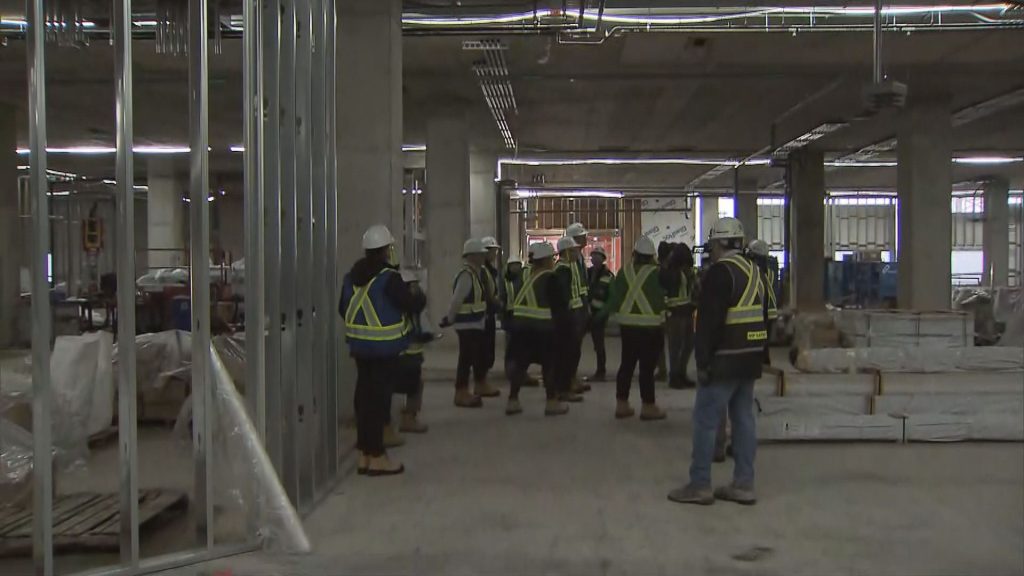Do not travel to fire-affected areas, urges B.C. public safety minister
Posted August 17, 2021 7:14 am.
Last Updated August 17, 2021 12:35 pm.
UPDATE: As of Tuesday midday, the Coquihalla Highway has re-opened, with a travel advisory in effect due to wildfires. Drive BC says the highway is open for essential travel only.
VANCOUVER (NEWS 1130) – B.C.’s public safety minister is doubling down on his messaging for people to avoid all non-essential travel to wildfire-affected areas of the province.
Mike Farnworth did not mince words Monday when he urged people to avoid vacationing in places like the Okanagan, which is being overwhelmed by wildfires, evacuations, and evacuation alerts.
“Given the conditions we’re seeing in our communities and on our highways, I want to be clear: do not travel to fire-affected areas for non-essential reasons. We want to ensure that people in fire-affected communities will be able to evacuate if necessary and access the supports that they need,” he said.
“If you are planning to travel to those areas, it’s time to change your plans. Instead, visit an area of the province where your presence won’t strain local resources and will have a positive impact,” the safety minister added.
B.C.’s wildfire situation has been escalating in recent weeks. Over the weekend, the July Mountain fire jumped the Coquihalla highway, merging with another blaze on the other side and shutting Highway 5 down between Hope and Merritt.
That has complicated the situation for many people who have been trying to get out of the B.C. Interior to the Lower Mainland. While the Coquihalla remains closed, Highway 5A and Highway 3 are both open, providing drivers with alternate routes.
DO NOT travel to areas affected by #BCWildfires for non-essential reasons.
People in those communities need to be able to evacuate, if needed, and access supports.
If you had plans, please change them. Instead, visit somewhere in BC your presence won’t strain local resources. pic.twitter.com/nikni3Urg8— BC Transportation (@TranBC) August 16, 2021
There are currently more than 260 wildfires burning across the province, the majority of them in the Kamloops and Southeast fire centres. Both those areas are home to popular travel destinations, such as the Okanagan and the Kootenays.
However, with many evacuation orders issued and others placed on alerts, spaces for evacuees are filling up.
“The wildfire danger throughout much of the Interior continues to be extremely serious, and we are in for a challenging fire in the coming days,” Farnworth said.
Public Safety Minister @mikefarnworthbc confirms significant damage done over last 24 hours by #bcwildfires and he’s strongly advising against non-essential travel to communities touched by flames.
He’s again asking people to honour evacuation orders. #bcpoli @NEWS1130
— Marcella Bernardo (@MBernardoNews) August 16, 2021
He’s also reminding people that the Central Okanagan region is still dealing with a COVID-19 outbreak, and that Interior Health continues to advise against non-essential travel to and from the region.
“So this, along with the current danger, ash, and smoke means this is not the time to visit or travel through,” Farnworth said, adding this does not mean people living in the region are being asked to leave.
Related articles:
-
Coquihalla closure overwhelming route through Princeton, mayor wants province to step in
-
Travel warning issued due to wildfires in B.C. Interior
However, he urged people who are under evacuation alert to be ready to leave at a moment’s notice, should their alert change to an order.
“The fire activity we’ve seen this summer, the fire conditions, they’ve been extreme. In these conditions, escape routes can quickly be compromised or cut off quickly,” Farnworth explained, pointing to a situation that forced BC Wildfire Service members to shelter in safe zones because of aggressive fire activity.
“The speed at which these fires move continues to challenge our professionals. It underscores how important it is for people to follow the directions of First Nations and local governments immediately.”








